
CK's TR6
-
Content Count
164 -
Joined
-
Last visited
Content Type
Profiles
Forums
Calendar
Posts posted by CK's TR6
-
-
My original one was quite scratched and a bit beat up from 40 years of putting the hood up. So, I ordered a nice new one. Rather than let the old one go, I powder coated it in black, along with the chrome strips under the doors. I put them on as an experiment. I haven’t gotten the motivation up to put the nice new ones on. I kinda like the black look now.
-
I have had excellent experience with EBC yellowstuff pads on several vehicles. I see that they are available for the TR6. I don't have them on my TR6 as I have KFP Gold pads on front and back (rear discs). But I also have the tire compound that can utilize these style pads (RE-71R tires) The various KFP compounnds:
2005 - Orange Color * Average coefficient of friction .650. Stable friction at all temperatures up to 1200 degrees F. Designed for light-weight open wheel or cars with very-good ducting. Requires less pedal effort.
2003 - Purple Color * Average coefficient of friction .500. Good stable friction at all temperatures up to 1200 degrees F. Popular with those who use a trail-braking driving technique, similar grip but a better wear rate than the P1101.
P1101 - Red Color Average coefficient of friction .530. High torque with moderate wear, for use in applications where thermal saturation is low. For use when under 600 degrees F operating and under 1200 degrees F spiking. Popular for formula cars with large and/or vented brakes. Not for use on aluminum.
P4211 - Blue Color Average coefficient of friction .490. Moderate torque with low wear rate. For use in applications where thermal saturation is low to moderate. For use when under 800 degrees F operating and under 1500 degrees F spiking. Common uses are rear applications for OEM based road race vehicles, vintage road-racing sport racers and open wheel cars plus small calipers on formula fords.
P42A - Gold Color Average coefficient of friction .470. Moderate torque with low wear rate. For use in applications where thermal saturation is moderate to high. For use when constantly over 450 degrees F operating temperature. Has the broadest thermal zone of these materials. Commonly used as a front pad material choice on larger vehicles
-
The 90 degrees looked like it was for the 4 cylinder. Perhaps you got caught up in the teething issues associated with a new product, 6 cylinder applications.
-
I know from Megajolt and Megasquirt manuals re EDIS that the missing tooth has to pass the sensor a specific number of degrees PRIOR to TDC #1. EDIS6 was, 60 degrees and EDIS4 was 90 degrees. Plus, you had to switch wires for the coil pack as the firing order scheme for the TR engine was different than that used in Ford architecture. Firing on one bank sounds like the latter problem. If using wasted spark 1-6 pairing will work, but the subsequent ones won't (ie 2-5, 3-4) if it isn't set up for the TR firing order.
-
Regulator by engine, it was the constant recirculation of fuel through the T shirt area. The fuel picked up heat from the exhaust going forward and going aft. I live in a warm climate and that T shirt area gets plain hot from the exhaust. I don’t drive short hops, nor do I drive slow. Probably the most extreme case is booking along at 85 plus across the desert in 117 degree heat for 3 hours or more.
-
Perhaps my high pressure fuel pump pumps too much. I had two hard lines going through the T shirt area of the frame. One fuel forward, the other a aft return to the tank. Even though they were wrapped with heat shield and the exhaust pipes had heat shields, the fuel rail would get so hot , you couldn't touch it. After much consternation and noodling, I solved that problem. Coming from my high pressure fuel filter, I have stainless steel braided line (teflon core) that runs forward. First over the wheel well arch inside the body shell alongside the fuel tank. Adel clamps hold it in place. It then enters a bent steel tube sleeve that turns it down inside the B pillar. At the bottom of the B pillar is another steel sleeve that turns the line forward through the inside of the rocker. Then another sleeve turns to outside the rocker toward the outer frame rail (under the floor pan just aft of the body mount). That frame rail is sleeved and the line continues to a bulwark fitting mounted on the outside surface of the inner frame rail. Then hard line up to engine compartment. The sleeves were put in place without disturbing the car much. I had to make a couple 1" circular holes on the inside face of the B pillar and rocker (I added Lightness! just like Colin Chapman espoused) for directing the guide wire. I had the rear plate of the rocker box cut out to provide access to and enlarge the hole at the bottom of the B pillar where it joins the rocker box. The bent sleeves had plates welded to them. On plate closed off the back of the rocker box, another closed off the inside surface of the rocker box below the floor pan, and the last welded to the backside surface of the B pillar.
-
When I measured the OEM ones on my 76 with calipers, they weren’t concentric. Off about 0.007” maybe more. Both of them. Perhaps mine were manufactured on a Monday morning.
-
If a new build, and you were using a MS3X like mine, you can have the MS3X directly trigger LS-1 coils. These are powered and have the logic input. Then you would need to figure out how to and where to mount the 6 coils. A Ford style coil pack would need a module between it and the MS3X, see the MS3X manual and DIY Autotune website. In my case, I had EDIS almost 20 years ago, so I had the VR mounts, the trigger wheel, and a nice coil pack mount that used the coil mount bosses on the block. Rather than reinventing stuff, I retained the EDIS module. As for sequential squirt, yes there is some improvement but not earth shattering. Over the years, I was able to sell on my original Megajolt and then my MS2.
-
My cam sensor was pretty butt simple. Took a existing distributor (tach drive!) broke the bell off. Turned the remaining stub on a lathe to a cylinder. 3D printed a plastic block to fit over that and that a 3 wire sensor would fit into. Took the original internals and ground off the pivot pins for the weights and trimmed down that plate to be a single tooth. The MS3X manuals talk about when the tooth should be there timing wise. Not supercritical. The software polls the sensor when it thinks it should and the tooth is either there or not.
-
-
-
Like all things, what are your goals and how much do you want to spend? Usually the last 10-20% is 100% more $$ or more. I am on one end of the spectrum and have clearly stated my goals and my solution. And been lambasted that I didn't use proper technique. Having said that, make sure the rear brakes are contributing to the cause by proper adjustment, (three clicks up of the parking brake handle is all you should have). Then, EBC yellow pads have worked wonders on 3 other cars I own. That's pretty cheap and maybe all you want. All weather radials will grip like all weather tires. I suggest the stickiest tire for the weather conditions you predominately drive your TR in (temp and rain). Then dial your inner Jackie Stewart back when in less than ideal conditions.
-
I guess. One flat on the XK8, donut tire on a 4000lb car. Drove judiciously home 25 miles on side roads. Non event. I have driven my TR all over AZ, CA, NM and up through OR, WA, back down then through NM, KA, and up to ND. I have probably put over 175,000 miles on the car. IDK anything about how UK tradies leave nails in the road, do they do that on purpose?
-
In the 40 years of driving my TR6, I have had one flat. First drive after a multi month change of various things and I didn't have my jack or lug nut wrench. In the time to walk to a phone and back, (30 minutes), the car had already been towed. I have the all of that in the trunk along with the 155 series spare tire (same outside dia as the rest of the tires) on a TR rim. That tire is used on old VW bugs, a 1900lb kerb weight car. So, I can't see how this tire if it is ever used would be even remotely stressed as long as I don't exceed the 112 mph speed rating. Upside, flat floor trunk, downside, a set of lug nuts in the boot and a problem of where to put the flat tire that comes off. Worst case, stuff it behind the front seats. Like any modern car with a donut, I would restrict my goings on until I got back to proper configuration.
-
LEDs
https://www.spokeworksled.com/shop
brightest tail lights on the planet. Third brake light project I designed and sold for awhile requires no drilling, easily removable, etc etc. Now owned by Litezupp.
-
As a Yank, assume I don't know much. But what I do know is that the speed of combustion varies not only for the richness/leanness of the mixture but also for how well the cylinder is filled. Think of a Pub where everyone has had a few pints each, the ones where everyone is elbow to elbow or the Pubs where everyone is socially distancing IAW the diktats of late. It's hard to start a melee in the second one but the first one it goes quickly. Once the intake valve opens, the cylinder will fill depending on two things, the Manifold Absolute Pressure (MAP) the valve sees and the flow efficiency of the head and valve. A measure of how full the cylinder is how close does the pressure inside the cylinder match the MAP when the intake valve closes. That ratio is proportional to the Volumetric Efficiency of the engine at that MAP and RPM. The Pub population will depend on the MAP and the VE. As the crowding gets less and less, it takes more and more time to get the fight going. For the engine to operate at it's best, it needs more and more advance to get the fight going as the crowding falls. This requirement is much much greater than the variation of timing driven by mixture. You might need up to 20 degrees more advance for this compared to 3-4 degrees for mixture. Greg Banish has published several books that are an excellent mix of theory and application.
-
From the Buckeye Triumph website
”Metric Calipers: The next change, at commission number CC81079 (end of '72) was to convert the calipers to metric. The caliper type was not changed at this time, it stayed 16 BP. I pulled the caliper off the suspension from a '73TR6 I junked a while back. That car was purchased in the early '80s and I'm pretty sure the brakes are original as there were no indications that the car had had any prior maintenance. This caliper has TYPE 16BP cast into the side, as would be expected. The bolts that attach the calipers are clearly different as shown in photos the right. The bolt for the early standard thread type caliper is on the left and the one for the metric caliper is on the right. The actual threads on the end of both bolts are the same to match the caliper mounting plate that wasn't changed. The head of the metric version is 3/4 inch ~ 19 mm. The body of the bolt for the metric caliper is larger diameter matching the larger diameter holes in the calipers. You won't find one of those bolts at the neighborhood hardware store.”
-
Well, if you have to spend money, dual masters with a balance bar would eliminate the problem. works good.......
https://www.goodparts.com/product/dual-master-cylinder-kit-tr250-tr6-5-8-bore/
-
In the US, emissions are tested for HC and CO. My 76 always had issues. After a lot of trial n error, I learned that the HC would spike if there was lean misfire, especially at idle. That means the best spark you can generate and at the proper time. I eventually put in a EDIS system as that had huge spark. As for CO, I added a lot of oxygen in the form of alcohol additive. The brand in the states is called HEET, comes in a yellow bottle. I added a lot of that to a tank with about 2 gallons in it. Passed emissions and then filled it up to dilute the alcohol. IDK if the PI systems could tolerate that. And last but not least, set the idle at 1000 rpm and set the valves a little loose. Passed every time after that.
-
This was my solution. First picture is an extra one I made in a GT6. Second picture is my car. Stock Triumph hub and horn. The added benefit for me is now my right leg is straighter when cruising and my knee doesn’t hurt anymore. I am going to make another in laminated Baltic birch. Down the road maybe another that is a leather rim.
-
-
A crank fired ignition system like Megajolt controlled EDIS system would let you really dial in the ignition to achieve maximum brake torque at many rpm/load conditions. So, not only max HP, but max efficiency at other than wide open throttle. The driveability difference is startlingly better for partial load conditions. Amazingly trouble and maintenance free.
-
I made 10 plinths, form fit replacement but different too. They all have been purchased. I am not making the repair part anymore. I will be making 5 more plinths at some point in the future. No definitive time though.
-
Theoretically, ignition timing should be advanced to the point of achieving maximum brake torque. For a given operating condition (rpm & load), if you plot MBT vs timing advance it is a curve that peaks, more advance beyond that point reduces MBT and therefore, efficiency. Depending on a lot of factors, you may have quite a bit of advance past the point of max MBT before you get ping. Additionally, you already have ping by the time you can actually hear it in the car. Here is where you can utilize a set of “detonation cans”. Which are no more than a stethoscope up against the block. A modern version is easily constructed from a electronic hearing amplifier off of Amazon. Desolder the microphone, solder it to a ten foot lead then glue it to a clamp. Clamp it to the web on the side if the block where the motor mount is. Plug in a set of headphones and turn it on. Read up on “spark hook tests” for more information.

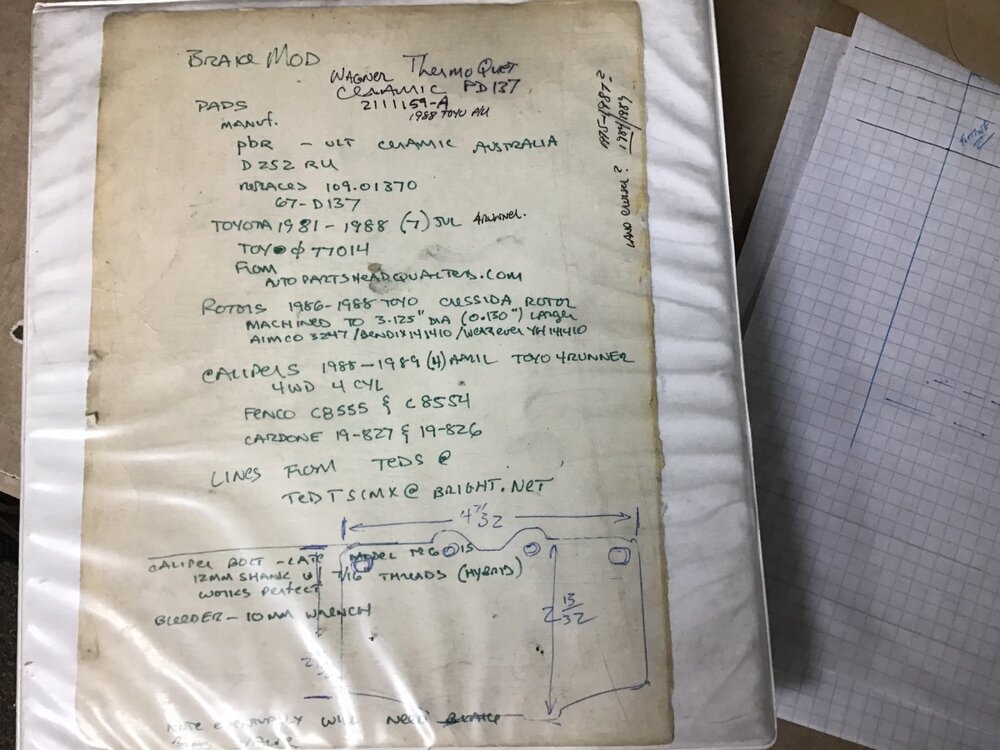
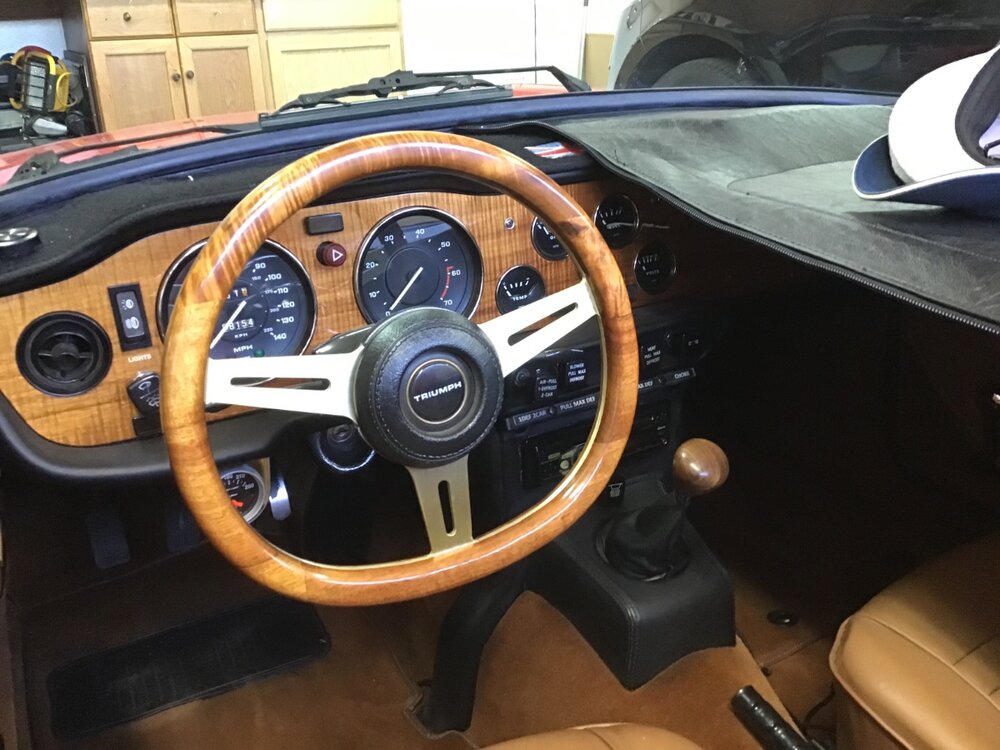
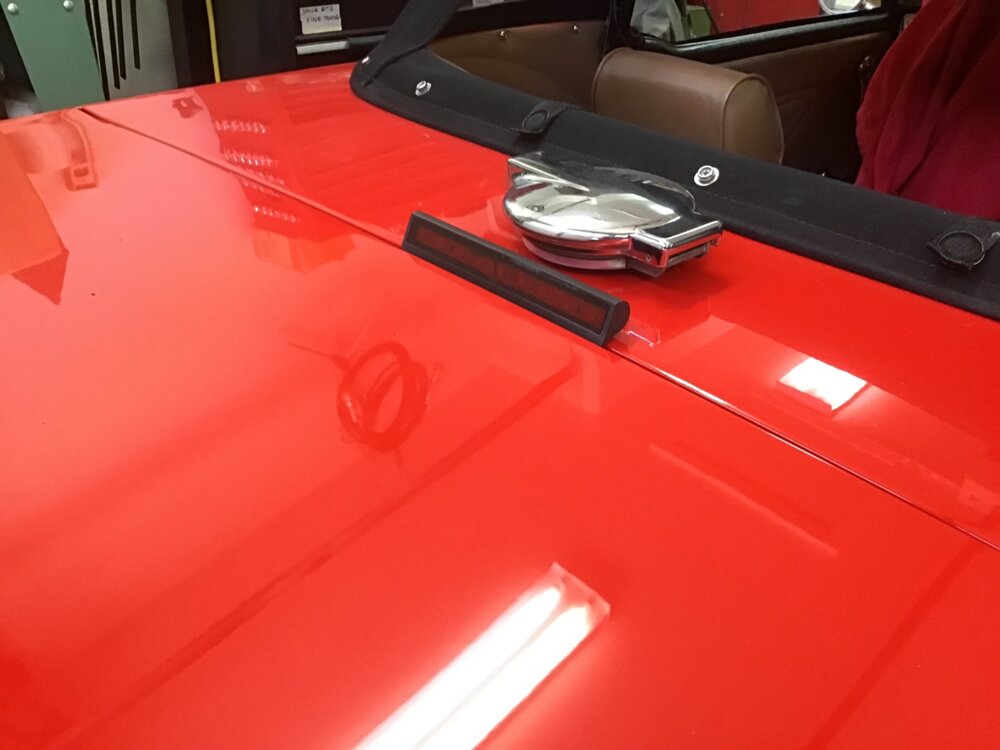
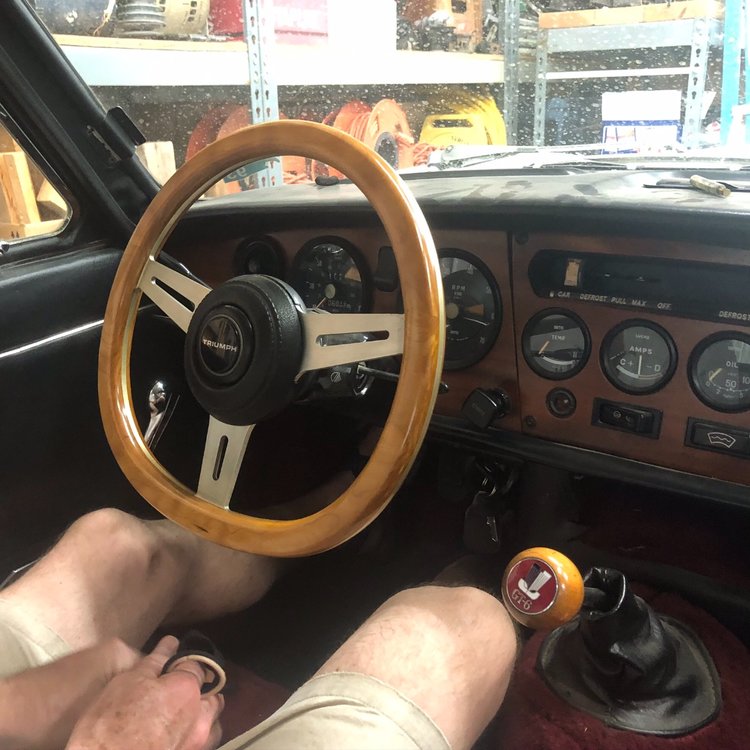
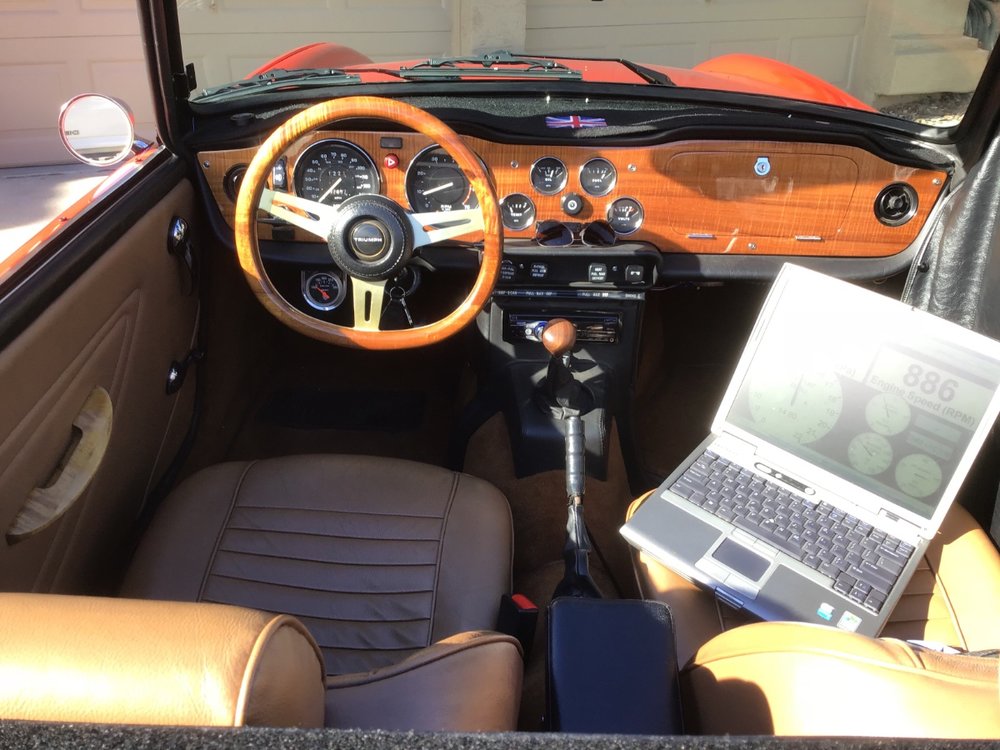
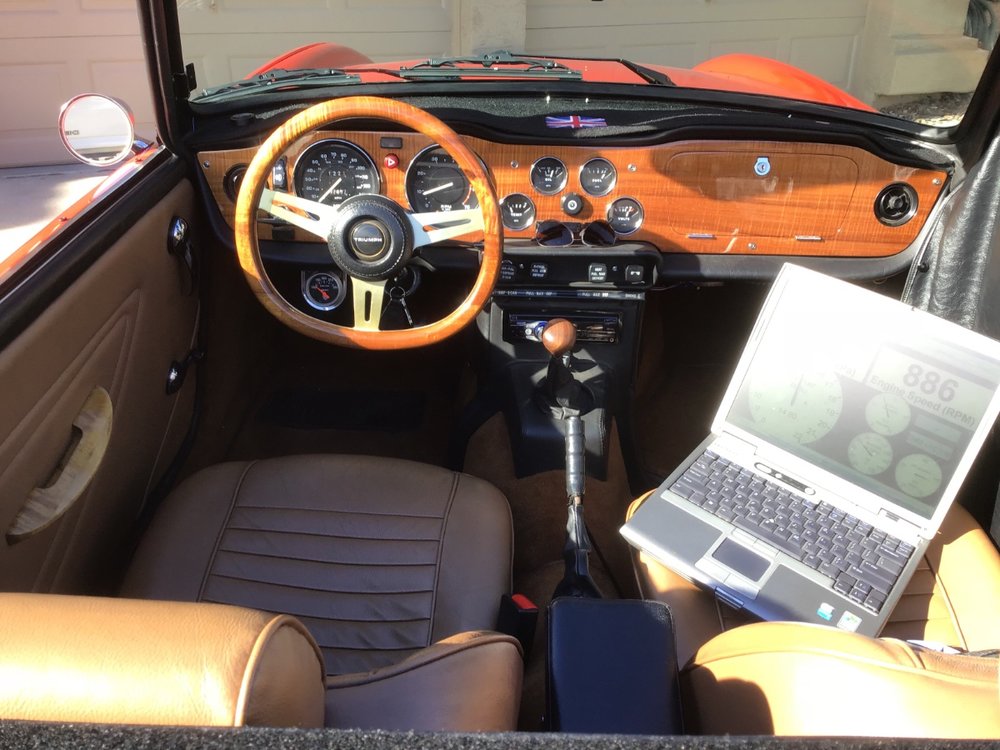
123 ignition map?
in TR6 Forum
Posted
Since you have a 36-1 wheel, could you just get a EDIS6 module and coil pack from Rockauto and run it with a Megajolt? I can send you a wiring diagram. I also have my drawings for the coil pack mount. When I sold kits, I had a tray that fitted above the pedals to mount the Megajolt.